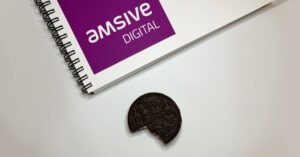Amazon Prime Day is slated for June 21-22 — hopefully, marketers have already made a list and checked it twice. With promotions submitted and inventory fulfillment streamlined, what’s left to prepare for your brand? Actually, quite a lot.
Just last year, Prime Day worldwide spend was estimated at $10.4 billion by leading research firms. And this year’s Prime members have already started shopping. Starting on June 2, Amazon has been offering early exclusive offers and deals from some of its biggest brands — including its own.
Amazon Blog 6.2.2021
“The two-day shopping extravaganza will offer Prime members over 2 million deals across every category…”
Businesses have a unique opportunity to gain visibility and customers if they’re prepared, stay proactive, and remain agile. Your top priority is understanding and executing how to make the most of Prime Day’s increased interest and demand.
Marketers know that Prime Day means high traffic — and brands should plan to see:
- Increased sales
- More clicks
- Higher cost per click
- More spend
- Flat conversion rate
- High average order value
- Positive return on investment
Prime Day consumer behavior deviates from the typical customer journey.
Customers exhibit unique behavior on Prime Day. Instead of following traditional customer journeys, consumers rarely know what they’re looking for — beyond the “best” deal. But “best” is subjective and dependent on each consumer, making it difficult for marketers to fully prepare.
Consider your own previous experiences with Prime Day or similar sale days. You’re thinking on your feet, focused on the moment, and making fast decisions. Your thought process might look similar to this:
Thought 1: “What’s this deal?”
Thought 2: “Oh wait, that’s nice!”
Thought 3: “But, is this deal THAT good?”
Thought 4: “Now, that’s a great deal. But it’s sold out.”
This chaotic thinking continues until consumers have found a deal that’s “good” enough to justify making the purchase. What does this change in consumer thinking and behavior mean for marketers? It creates traffic spikes as users navigate for the products they want — and then move to consolation purchases from the products they see.
While marketers stress about higher ad spend and lower conversion rates, it doesn’t always turn out as bad as it seems. Due to the exponentially high volume of users in market, cost-per-click (CPC) doesn’t often increase to the fearful levels that marketers expect. Average value order also spikes as users are ready to spend — meaning more sales and positive ROI. However, ROI isn’t the only thing that’s important to your brand on Prime Day.
Define your Prime Day KPIs.
Performance marketers may shudder but there’s more to Prime Day than growing ROI. The nature of Prime Day, a mad dash for sellers and consumers alike, already breaks consumer norms. And marketers should rethink what successful performance looks like during this chaotic time.
Instead of solely focusing on ROI, optimize moment by moment to drive the best sales possible. Establish SMART main and secondary KPIs to measure during this unique timeframe. After Prime Day passes, then marketers can sift through the data to find a halo effect in the days and weeks after. What does this data show? Have customers circled back to the site or page to make a purchase? Creating a strategic plan to continue to strengthen your brand in the market is critical for the weeks that follow Prime Day. Continue to engage and encourage customers after Prime Day, when your brand can achieve more revenue through normal product prices and less competition.
Keep your brand top-of-mind for new customers post-Prime Day.
Prime Day is just the first touchpoint between your brand and new customers. After the initial moment of visibility, your brand needs to execute comprehensive campaigns to continue customers’ journey through your sales funnel. Full-funnel thinking utilizes the latest strategy, tools, and technology to meet customers at every moment.
This includes:
Retargeting: Ideally, you’ve developed a retargeting so that your team isn’t left scrambling in the post-Prime Day fray.
Video Advertising: Leverage video advertising to build trust with your brand and keep products visible for new customers who’ve quickly seen your products on their haphazard Prime Day journey.
Identify even more Prime Day opportunities.
ROI is in marketers’ DNA. While Prime Day KPIs may include different sets of metrics, brands ultimately need to drive ROI. Two ways to drive ROI on Prime Day are to launch new products and create product bundles.
Launch New Products: Prime Day is an excellent opportunity to launch new products. Users are open to trying new products — and will be more likely to add your products to their cart.
Create Bundles: While it might seem obvious, marketers often overlook increasing average order volume when conversion rates are expected to decline. With the sheer number of Prime Day deals, consumers are ready to spend, and brands should maximize even further by bundling relevant products. By aligning complimentary products, your brand will be visible in many more contexts. If your product can’t be easily bundled, consider adding incentives when combining two products together.
While sellers can use Amazon’s Prime Day portal, marketers can help brands prepare by thinking beyond the status quo. Instead of focusing on just Prime Day, think beyond just the day of to integrate this unique sale into a robust digital marketing strategy.
To learn more about holistic, future-ready paid media strategies, read Paid Media Targeting Beyond Cookies.






